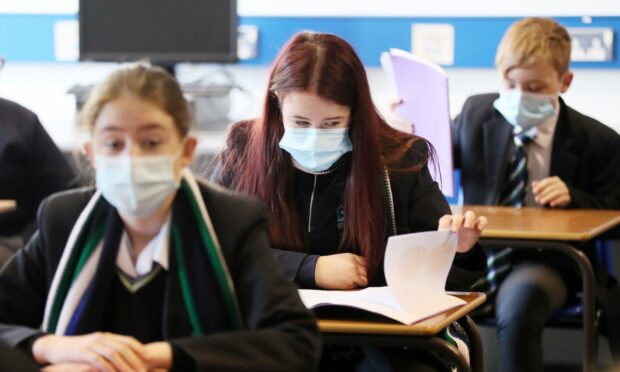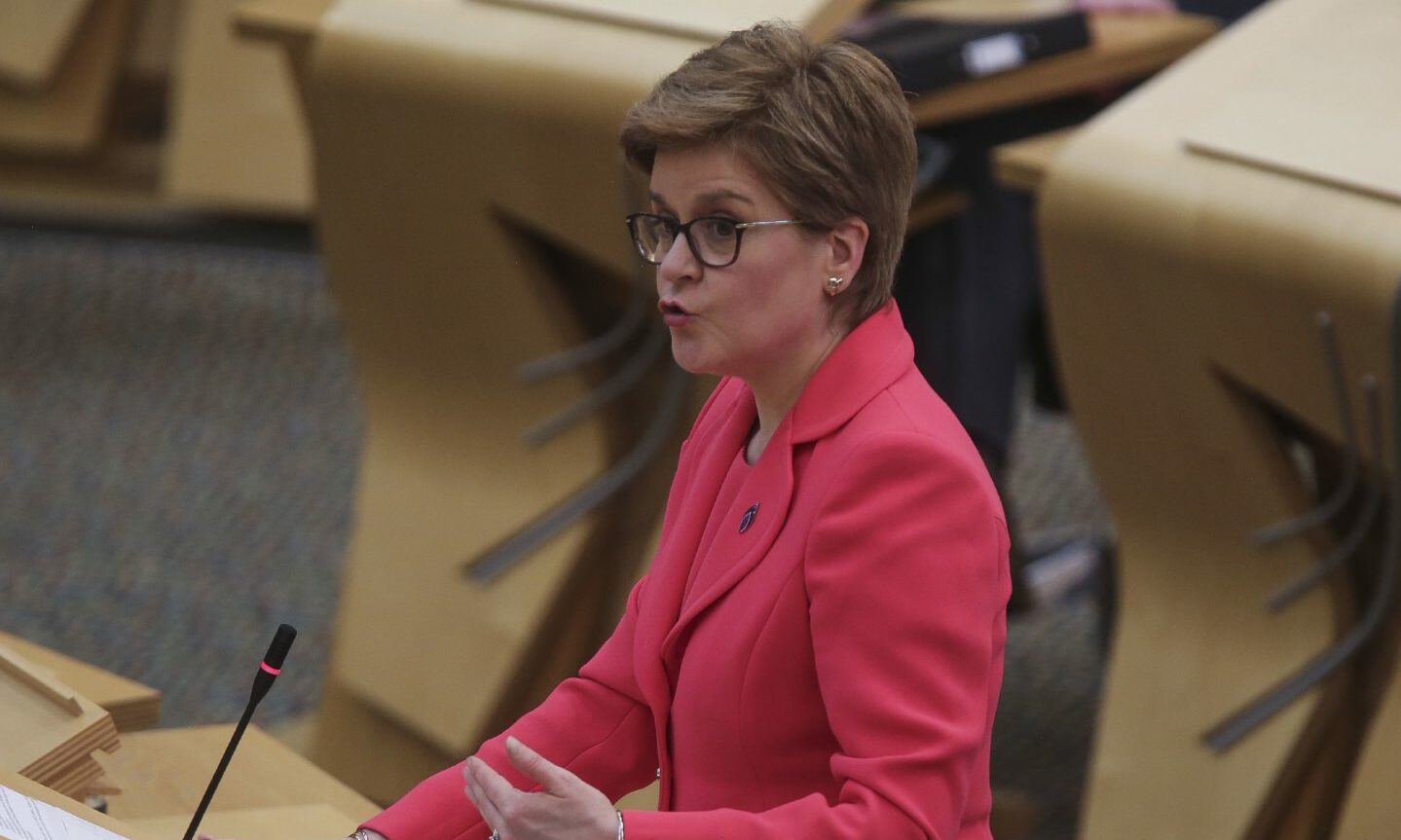Secondary school pupils across Scotland will not have to wear masks in classrooms when they return after the mid-term break.
First Minister Nicola Sturgeon confirmed current guidance on face coverings will be relaxed from February 28.
Teachers will also no longer be forced to wear masks while in class as Covid cases gradually fall.
Covid experts had recommended the change to reduce barriers to communication.
Ms Sturgeon said pupils will still be expected to wear face coverings elsewhere in schools when indoors and not in class.
The SNP leader said: “I have been clear that we do not want to keep these measures in place for any longer than is necessary, but that we must continue to be led by scientific and expert advice.
“On Tuesday our advisory subgroup on education and children’s issues met to discuss a number of issues, including the use of face coverings.
“The group reiterated its previous position that the removal of mitigations in schools should follow a phased approach.
“It also advised that the next phase could begin after the February half-term break, with the removal of face-coverings in classrooms – for both pupils and staff – on February 28.
‘Reduce barriers to communication’
“This change will reduce barriers to communication in the classroom and reduce any wellbeing impacts which arise from the use of face coverings.
“Any young person or staff member who wishes to still wear a face covering in the classroom should be fully supported in doing so.
“We currently expect that face coverings will still be required outside the classroom in indoors communal areas of schools for a period after February 28, but this will be kept under regular review.”
She added: “The remaining restrictions on school assemblies should be lifted and school visits linked to transitions, for example, Primary 7 children visiting a secondary school should be given greater priority.”
Claims of U-turn
Scottish Conservative leader Douglas Ross said the move should have come earlier.
But the first minister claimed it would have been “deeply irresponsible” to scrap the need for face masks in January due to the Omicron wave.
Mr Ross said: “Young people’s education has been unnecessarily disrupted for far too long.”
Green MSP Ross Greer said that some vulnerable members of staff may be left feeling more anxious due to the mask mandate being scrapped in classrooms.
The first minister reiterated that all local councils and schools will be expected to support pupils or teachers who want to continue wearing a face covering.
It is important that both pupils and staff have the right to continue to wear face coverings if they wish.
– Larry Flanagan, EIS general secretary
Teaching union EIS said they would have preferred for the current rules to remain in place until the end of March.
General secretary Larry Flanagan said: “It is important that both pupils and staff have the right to continue to wear face coverings if they wish and, in some cases, where there is a heightened vulnerability in play, face coverings may still be required.
“There has been a slight drop in infection levels within schools but they remain high – over 4,000 staff are off school for Covid related reasons and more than 20,000 pupils.
“Enforcing the remaining mitigations, therefore, around ventilation and face coverings in communal areas, remains critical to school safety.”

